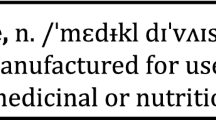Abstract
Objective: To determine the patterns of drug use in Estonia for the years 1989 and 1994–1995, i.e. for the years before and after the pharmaceutical services in the country changed from a state monopoly to a competitive market.
Methods: The wholesale data from Estonia and the defined daily doses methodology were used. For comparison, national statistics on medicines from Finland and Sweden for the years 1994–1995 are shown.
Results: The general sales of drugs in Estonia decreased almost twofold in all major pharmacological groups from 1989 to 1994 and subsequently increased by 10%–30% in 1995. Substantial differences in patterns of drug use between Estonia and the two Nordic countries were observed. The amount of prescription-only medicines used in Estonia was approximately 25% of that used in Finland and Sweden. The amount of over-the-counter drugs used was 61% of that used in Finland and 58% of that used in Sweden. In the drug use patterns in Estonia, some common trends can be noted: (1) persistent traditions, such as the low use of diuretics, beta-blockers, antithrombotics and inhalant anti-asthmatic drugs; (2) changes in prescription preferences – central anti-adrenergic drugs, pyrazolones, aminoglycosides and barbiturates are being replaced by calcium channel blockers and angiotensin-converting-enzyme inhibitors, propionic acid derivatives, cephalosporins and benzodiazepines, respectively; (3) rapidly increasing use of drugs not prescribed in the 1980s, such as hormonal contraceptives, opioids and antiulcer drugs, which strongly improves the quality of pharmacotherapy in Estonia.
Conclusion: The general trends in Estonia and the two Nordic countries are similar – the use of newer and more effective drugs is increasing and that of older ones decreasing. The changes are more rapid in Estonia than in Finland and Sweden, but, because of a short observation period, the use of newer drugs not yet prevailing. The international differences in drug utilization observed in this study may possibly be related mainly to the prescription preferences (e.g. therapeutic traditions) and less dependent on the respective health care systems (e.g. reimbursement schemes) and economic state of the country.
Similar content being viewed by others
Author information
Authors and Affiliations
Additional information
Received: 30 July 1997 / Accepted in revised form: 27 November 1997
Rights and permissions
About this article
Cite this article
Kiivet, R., Bergman, U., Rootslane, L. et al. Drug use in Estonia in 1994–1995: a follow-up from 1989 and comparison with two Nordic countries. E J Clin Pharmacol 54, 119–124 (1998). https://doi.org/10.1007/s002280050432
Issue Date:
DOI: https://doi.org/10.1007/s002280050432




